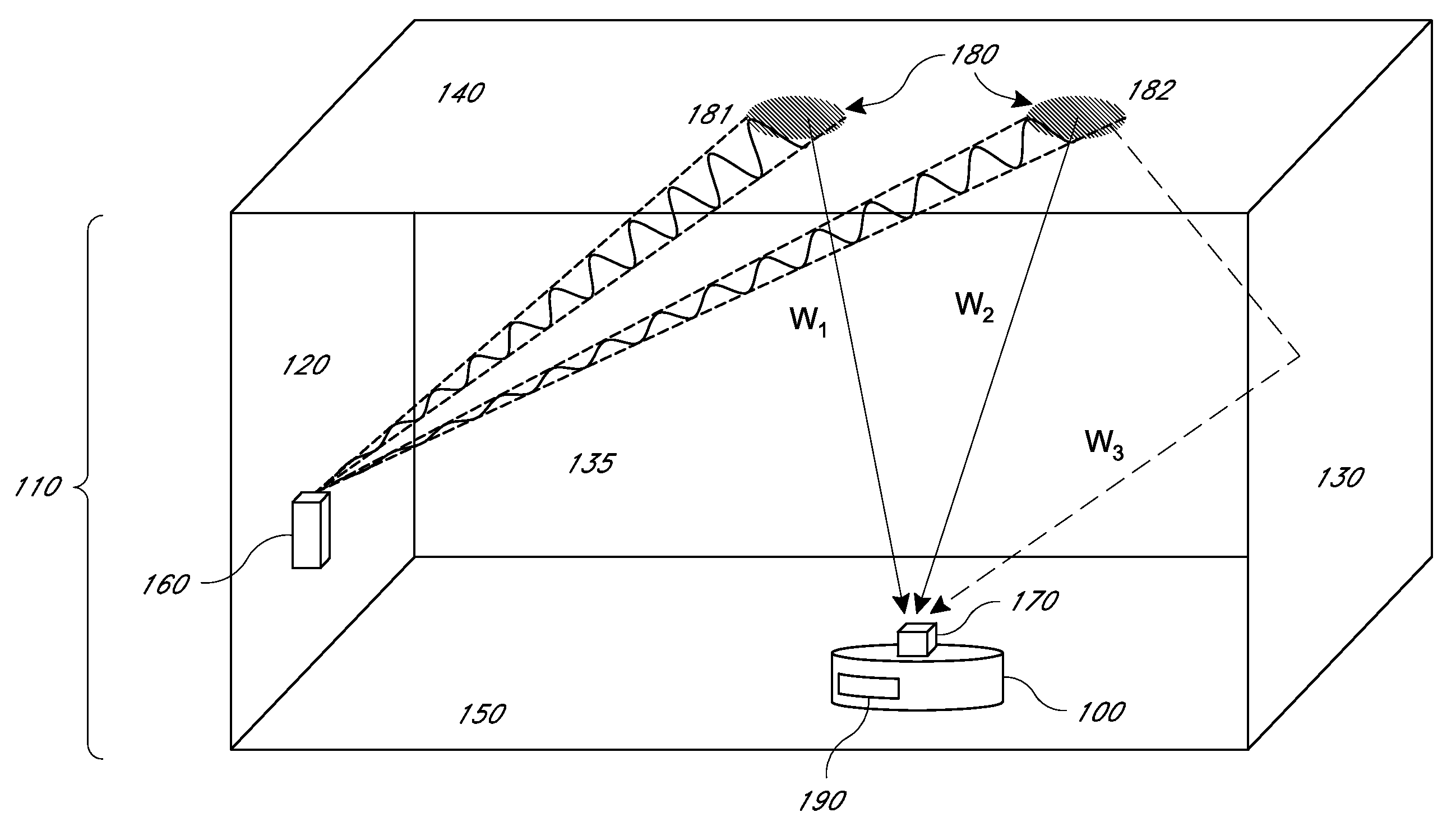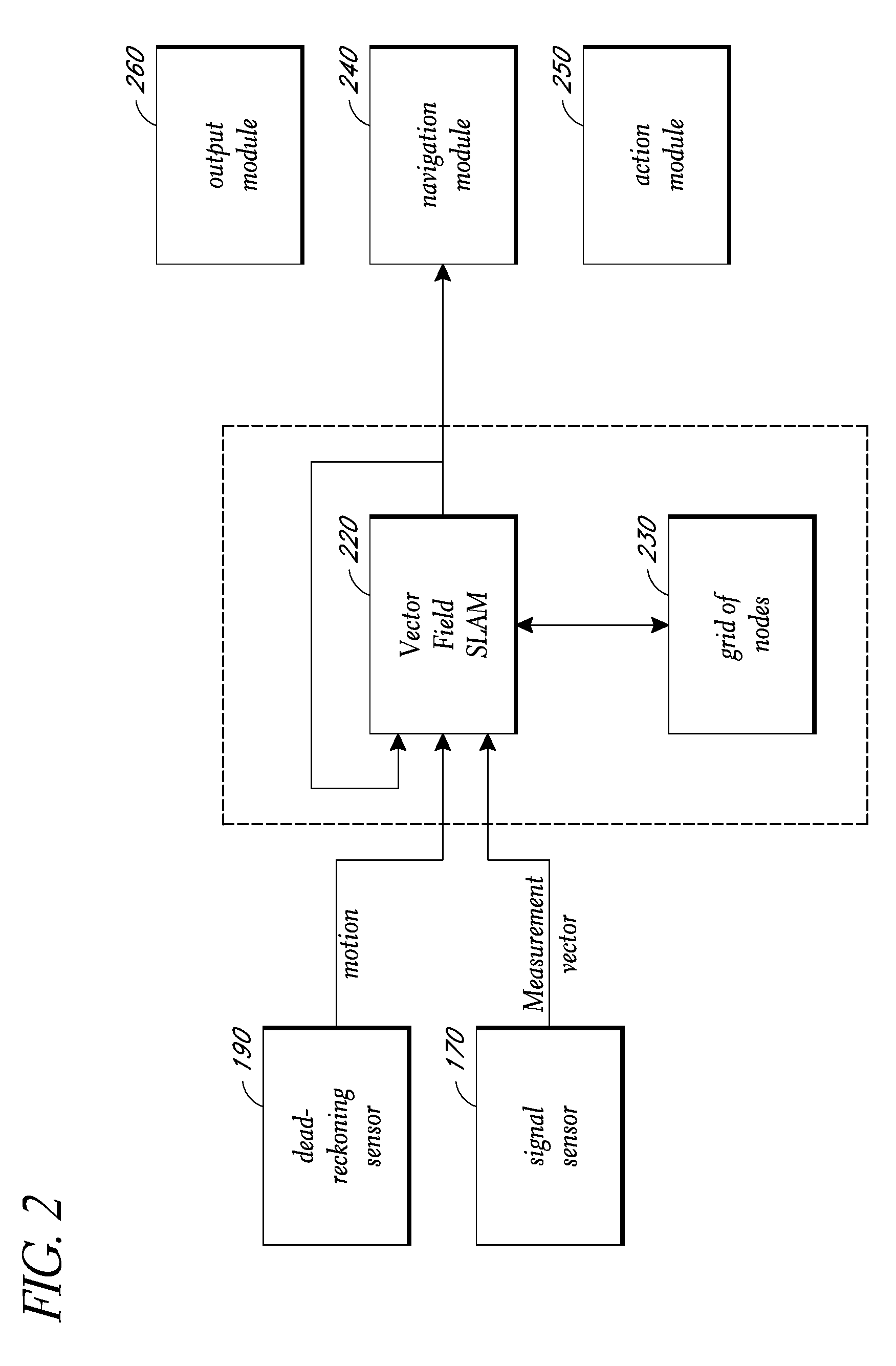Localization by learning of wave-signal distributions
a wave-signal distribution and localization technology, applied in the direction of navigation instruments, programs, instruments, etc., can solve the problems of inability to implement, lack of resources necessary for running known systems, and inability to effectively take into account practical effects, etc., and achieve the effect of less accura
- Summary
- Abstract
- Description
- Claims
- Application Information
AI Technical Summary
Benefits of technology
Problems solved by technology
Method used
Image
Examples
Embodiment Construction
[0033]Described herein are methods and systems for the localization of an object, such as a mobile object (e.g., a robotic floor cleaner). Certain embodiments may utilize such mobile object localization to navigate the mobile object. By way of illustration and not limitation, the mobile object may optionally be an autonomous, semiautonomous, or remotely directed floor cleaner (e.g., a sweeper, a vacuum, and / or a mopper), delivery vehicle (e.g., that delivers mail in a building, food in a hospital or dormitory, etc.), or monitoring vehicle (e.g., pollution or contaminant detector, security monitor), equipped with one or more drive motors which drive one or more wheels, tracks, or other such device, where the drive motors may be under control of a computing device executing a program stored in non-transitory memory (e.g., it persists when the object is powered down or when some other data is overwritten or erased).
[0034]Example embodiments will now be described with reference to certa...
PUM
 Login to View More
Login to View More Abstract
Description
Claims
Application Information
 Login to View More
Login to View More - R&D
- Intellectual Property
- Life Sciences
- Materials
- Tech Scout
- Unparalleled Data Quality
- Higher Quality Content
- 60% Fewer Hallucinations
Browse by: Latest US Patents, China's latest patents, Technical Efficacy Thesaurus, Application Domain, Technology Topic, Popular Technical Reports.
© 2025 PatSnap. All rights reserved.Legal|Privacy policy|Modern Slavery Act Transparency Statement|Sitemap|About US| Contact US: help@patsnap.com



